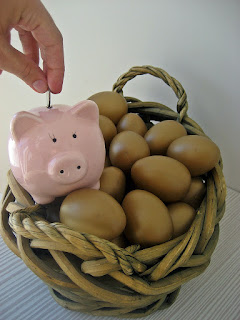#28 Care and Feeding of Your New Home
Your new home is, first, your
home; and second, it’s possibly the most important investment you are
acquiring! Your home mortgage is already
working for you as an important anchor element of your credit profile, and as a
clear statement of your stability in your community. It is literally up to you to determine
whether its value will increase or deteriorate!
We see such concepts
(increasing value or deterioration) very easily in smaller examples. For instance, if we neglect our vehicle’s
maintenance, it soon lets us down, and its resale value plummets! In the case of your new home, it would be
smart to begin right at the beginning with a sound plan for its “care and
feeding,” so to speak! There are
precautions and preventative steps that will help your property hold its value,
and insure an increase in that value, over time.
Some of the issues that put
wear and tear on residential buildings are things over which you have no
control. The way to keep damage to a
minimum is to take preventive measures where possible, and act quickly after
the fact. Severe weather punishes all
building exteriors – whether it is intense cold, wind and precipitation, or
intense heat that bakes exterior finishes.
Repairing storm damage as soon as possible – such as roof damage that
might allow water to seep through to interiors – will keep potential residual
damage to a minimum. External natural
drainage patterns will alert you to trouble spots where such paths need to be
diverted away from your house foundation.
Inside, it’s important to
make sure that all components that can cause damage are kept in good working
order. Some of our most common household fixtures can
cause a lot of trouble if their functions fail! Washing machines, dishwashers, bathtubs,
toilets and all sinks are floods waiting to happen when not properly
maintained! (Teaching youngsters about
small objects that may clog a drain can save you many headaches and many
dollars!)
Along with plumbing
components, electrical components must be connected, used and monitored
regularly. Overloading circuits, using
damaged wires or connectors and misuse of power bars are all dangerous
gambles. Electric appliances – like a
hair dryer – should not be stored or used near water faucets. Fires are too often traced to carelessness
with electrical components.
Pest control should be a
heads-up issue. Depending where your
home is located, your issues will vary.
Wildlife can decide to try to come in out of the cold and find snug
little places to rest (and breed) and chew away at building materials! Insects will infest, if given the
opportunity. Become informed about the
local pests, consult an expert service and handle the risks before the trouble
has a chance to start.
Looking at the two seasons
most immediately affecting our lives, here are a few tips to help you stay on
track for good residential property safety and maintenance:
WINTER: 1. Clear debris from gutters and downspouts and
make sure water is directed away from your home’s foundation. 2. Replace
furnace filters to ensure efficient and clean operation. 3. Check windows and doors for drafts and
install weather stripping, if needed.
SPRING: 1. Remove
foliage touching your home. This will
reduce damage to your home from wind and lessens the odds of insect
infestation. 2. Replace batteries in your smoke and carbon
monoxide detectors. 3. Power wash deck or patio to prevent mold and
mildew. Decks need a coat of stain or
sealant every other year.
Treat these lists as your
starting point. Add to them, and
develop similar lists for SUMMER and AUTUMN.
The future market value of your
home is largely in your hands!




Comments
Post a Comment